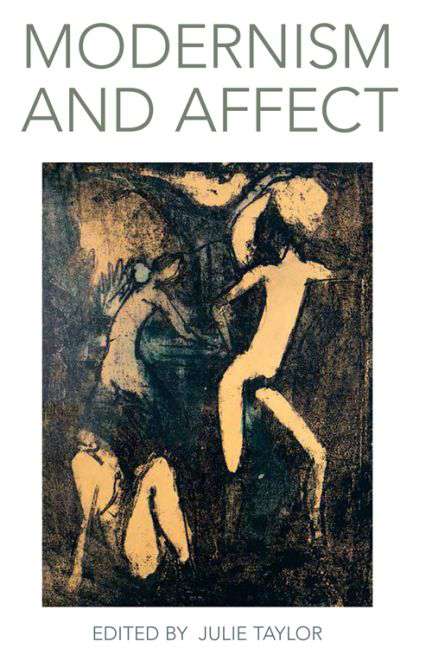Book contents
- Frontmatter
- Contents
- List of Illustrations
- Acknowledgements
- Notes on Contributors
- Introduction: Modernism and Affect
- 1 Mind, Body and Embarrassment in Henry James's The Awkward Age
- 2 The Trauma of Form: Death Drive as Affect in À la recherche du temps perdu
- 3 Logic of the Heart: Affective Ethical Valuing in T. E. Hulme and Max Scheler
- 4 The Line that Binds: Climbing Narratives, Ropework and Epistolary Practice
- 5 The Amplification of Affect: Tension, Intensity and Form in Modern Dance
- 6 Love and the Art Object
- 7 Animating Cane: Race, Affect, History and Jean Toomer
- 8 Fear and Precarious Life after Political Representation in Baudelaire
- 9 Bloom-Space of Theory: The Pleasure and the Bliss of Gerty MacDowell
- 10 From Odysseus to Rotpeter: Adorno and Kafka, Mimicry and Happiness
- 11 Making Happy, Happy-making: The Eameses and Communication by Design
- Index
11 - Making Happy, Happy-making: The Eameses and Communication by Design
Published online by Cambridge University Press: 15 September 2017
- Frontmatter
- Contents
- List of Illustrations
- Acknowledgements
- Notes on Contributors
- Introduction: Modernism and Affect
- 1 Mind, Body and Embarrassment in Henry James's The Awkward Age
- 2 The Trauma of Form: Death Drive as Affect in À la recherche du temps perdu
- 3 Logic of the Heart: Affective Ethical Valuing in T. E. Hulme and Max Scheler
- 4 The Line that Binds: Climbing Narratives, Ropework and Epistolary Practice
- 5 The Amplification of Affect: Tension, Intensity and Form in Modern Dance
- 6 Love and the Art Object
- 7 Animating Cane: Race, Affect, History and Jean Toomer
- 8 Fear and Precarious Life after Political Representation in Baudelaire
- 9 Bloom-Space of Theory: The Pleasure and the Bliss of Gerty MacDowell
- 10 From Odysseus to Rotpeter: Adorno and Kafka, Mimicry and Happiness
- 11 Making Happy, Happy-making: The Eameses and Communication by Design
- Index
Summary
Among the personal papers of architect and designer Eero Saarinen is a curious chart of the marriages of his friends, ranking their relative happiness on a scale from 0 to 100 per cent (Lange 2006: 244). At the top of the chart – with a whopping ninety per cent happiness rating – are Saarinen's dear friends Charles and Ray Eames. Saarinen's diagrammatic approach to the happiness of his intimates may strike us as rather technical, perhaps overly quantitative or schematic. Adorno would have been horrified. By what empirical method does one measure something as unquantifiable or resistant to calculation as happiness – that notoriously fuzzy affective complex of well-being, contentment and pleasure that has long been at the center of the philosophical question of what counts as the ‘good life’? But his choice of the Eameses as almost completely happy was entirely in keeping with the couple's public image at mid-century. Arguably the most influential American designers of the postwar period, the Eameses were a model happy couple whose iconic designed objects and design practice would be globally exported as the promise of a happy lifestyle afforded by US-style democratic liberalism.
Eamesian happiness, circulating through both images and objects, was a particular mid-century product that linked the ‘goodness’ of the American good life, secured through the United States's booming consumer economy and global hegemony at the dawn of the Cold War, to the ‘goodness’ of so-called good design. Spearheaded in 1948 by MoMA's Director of Industrial Design, Edgar Kaufmann, Jr, the Good Design programme was a landmark merger of art and commerce – a partnership with the largest wholesale marketer in the USA, the Chicago Merchandise Mart. The programme selected the best, most innovatively designed American consumer goods for display in a series of semiannual exhibitions in Chicago and New York under the aegis of MoMA and reflected the museum's interest in design as a way of fusing modern art and the everyday domestic.
- Type
- Chapter
- Information
- Modernism and Affect , pp. 203 - 225Publisher: Edinburgh University PressPrint publication year: 2015

